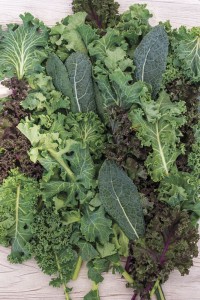Cold weather can keep you from savoring the wholesome taste and nutrition of homegrown leafy greens – but it doesn’t have to just yet! Many of your favorites can be grown well into the fall. There’s an added incentive in that the cold actually sweetens and enhances the vegetables’ flavor. Keen on growing leafy greens and eating fresh from your garden during the colder months? Here’s what you need to know.
The best plants to grow
Arugula, spinach, lettuce, kale, parsley and chard are some of the best leafy greens for your cold garden. These cold hardy vegetables grow well in low temperatures and, aided with row covers or grow tunnel, will give you excellent yields in the cold season.
Mind the pace and the space
Cold weather has a way of slowing things down, which is just as well for your cause and exactly what you need to do as you’re starting out. Begin with light protection, note how the plants respond and then adjust in accordance. Experimenting with the timing of crops and with multiple varieties is pretty much the best way of finding out what will work best for your garden. Keep sowing new crops whenever a spot becomes vacant so the growing space is optimally utilized.
Improve soil fertility
Incorporate lots of compost into the soil so your leafy greens have access to all the nutrients they can ask for. They do ask for and use up a lot so it’s advisable you work in a 2-3 inch layer of compost every time you remove a crop.
Protect your plants
There are many ways of protecting your leafy greens from the cold. Simple leaf or straw mulches, row covers and even covering the plants with old blankets can go a long way in ensuring their survival. A greenhouse remains one of the best ways of growing in the winters and an excellent investment. Keep an eye for those unexpected sunny days- you’ll need to vent cold frames and greenhouses to avoid a buildup of hot air that can damage your leafy greens.

